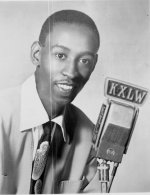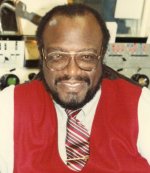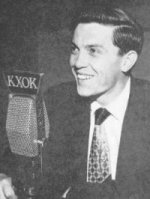Radio HOF
Burks, Spider
 Spider Burks – Legacy
Spider Burks – Legacy
Spider Burks was one of St. Louis’ first black disc jockeys, and he is remembered as a champion of jazz. He had graduated from Hampton Institute and began working at KXLW here in 1947. During his stint at that station, which lasted until 1956, Spider became a huge moneymaker for the station and himself.
He got the job initially when a radio shop owner on Easton Avenue sponsored a half-hour block of time and used Spider as his disc jockey. Things went so well that the station hired him, and he would sell advertising to supplement his income.
He’d bring in his own records, and his two shows, “After School Swing Session” and “Down the Alley Behind My House” were huge favorites of the high school set. The record companies soon realized Spider Burks’ show could really “sell” their product.
Burks also worked as a disc jockey on KSTL, KADY/KADI-FM and KATZ, leaving the business in 1969.
Listen to Spider Burks on KSTL, in 1957
Listen to Spider Burks on KATZ, in 1957

